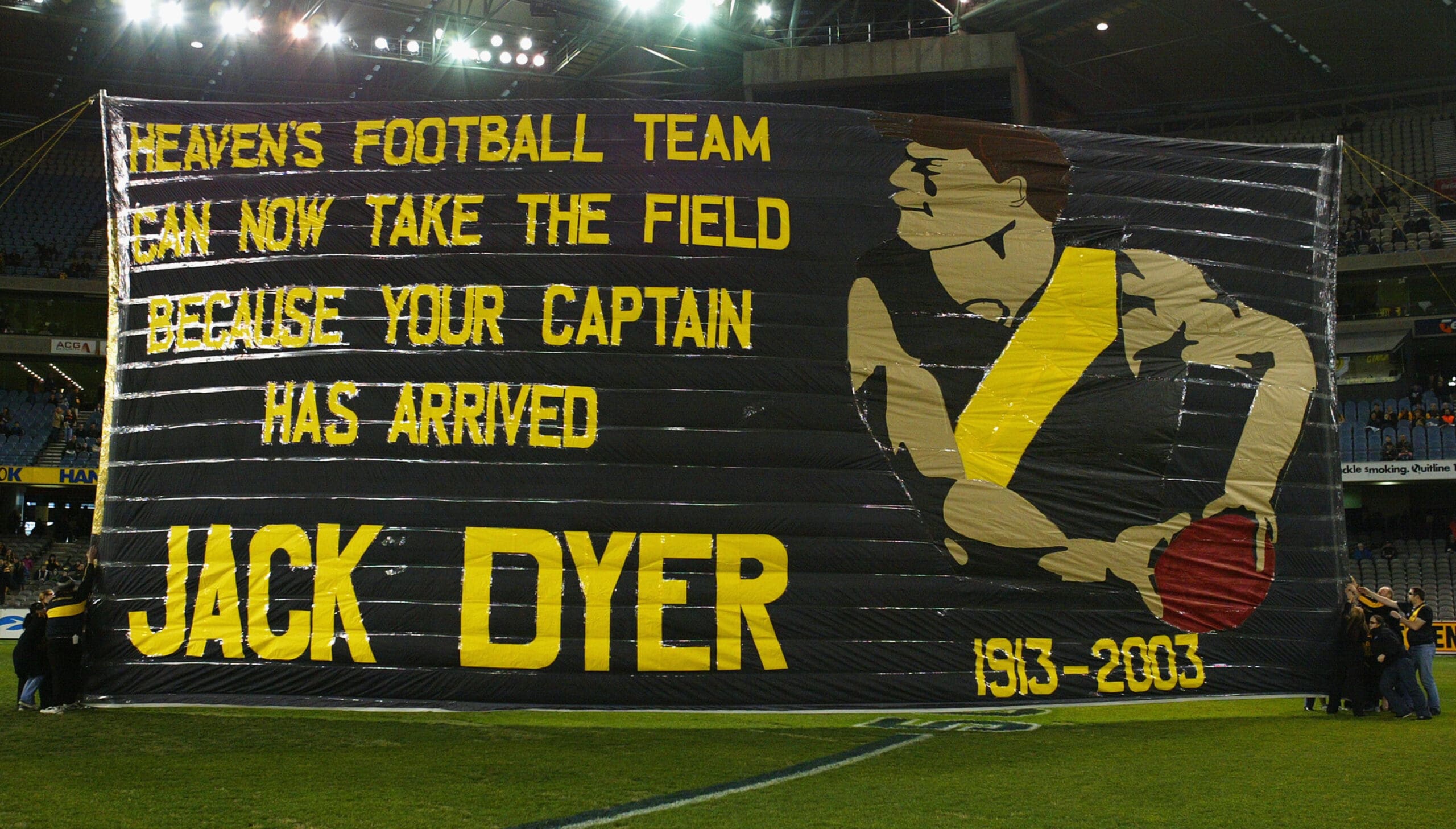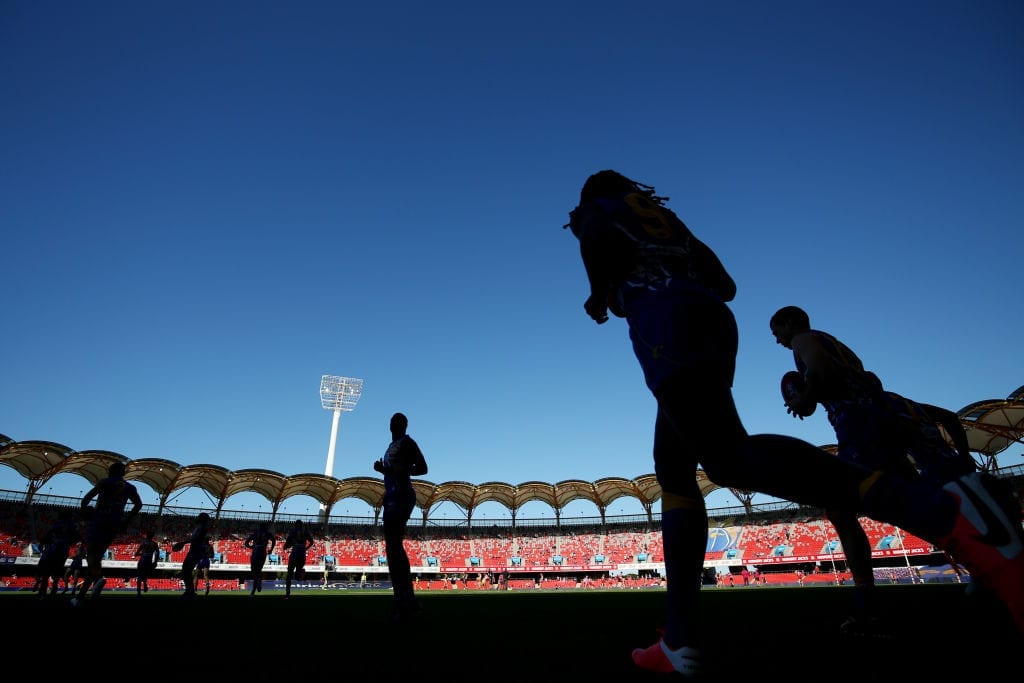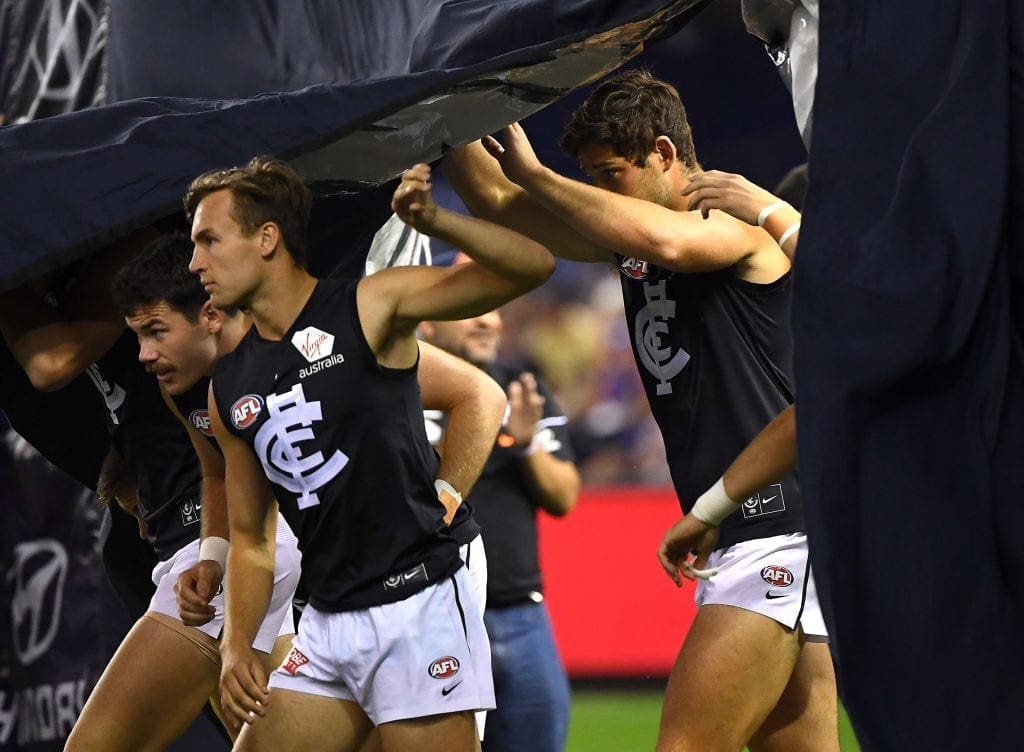It is a vivid memory for all of us.
Tottering before the much bigger feet of our parents or a guardian and clicking through the turnstile before chicaning through the limbs of larger barrackers towards the rich green of the oval. Further hurdles were hopped along allotted aisles before claiming a pew for the day with palpable glee.
If you were anything like me, these early afternoons at the footy meant your feet were left swaying as you scanned the outer, eagerly awaiting your familiarly clad gladiators to enter the arena.
If you were anything like Matthew Hagias, your eyes were pinned on the player's race, desperate to see what the cheer squads had in store for his pupils.
The art of constructing crepe paper banners is a traditional practice that spans back through the generations of every football club's most loyal supporters. And although these masterpieces remain intact only momentarily before facing destruction, Hagias, and his great mate, Leigh Meyrick, have decided to honour these short-lived signs of affection with a far more permanent tribute – the pair have penned a book.
Speaking with Hagias earlier this week, I opened our chat with the obvious query – why write a book about something that has no empirical bearing on the outcome of any game?
For the professional polymath, the idea started over a drink with his mate and their desire to champion the uniquely Australian custom.
“He [Meyrick] said ‘there's an idea there' and ‘there's a chance to try and make it something bigger – that's the way I look at it,” Hagias explained.
“It's not like we were obsessed, and we wanted to boast about banners, I think we both looked at it and went ‘actually, it's quite a quirky thing. Maybe we could turn it into something big'.”
RELATED: The Oval Ball Book Club: AFL 2020 - A Season Like No Other
Despite the time spent completing the pair's project requiring the space of a small suburb, the resulting book fits comfortably within one's hands. Still, irrespective of the book's size, its contents stretch the length and breadth of a multitude of eras in an effort to pay homage to the history of these crepe creations.
Across Hagias and Meyrick's coffee table tome, the duo have sought to shed light on how the tradition came to pass and grow, how they affect the people that construct them and even how to make one yourself.
There are also enough matte printed pictures to spark the sensibilities of fans from every creed for days on end.
When scanning a passion project of this size, there are naturally going to be stories that are spun and monolithic placards that have been raised that resonate with every reader, and Hagias expounded that he was no different.
Although growing up an Adelaide fan and now being tasked with constructing the four lined limericks that coat the face of the GWS Giants' banners on a weekly basis, the co-author stated that it was actually the tale of non-rhyming Richmond banner that hit his heartstrings the hardest.
“I think the biggest one for me was Jack Dyer's banner when he passed,” Hagias said.
“The story there was more around the process that led to the banner. Everyone knows ‘Captain Blood's story [who was] a club legend at Richmond and was a very, heavily publicised figure in the early days of footy media.
“When he passed, it was a really sad time, but it was the reaction to his death and that banner that blew me away.”
With the news of Dyer's death filtering through to former cheer squad leader, David Norman, whilst attending a reserves game in late August of 2003, Hagias said that the general and his company dropped their beers and converged on the club to honour the Tigerland immortal as they best knew how.
Working into the wee hours of the morning to make the eulogistic run-through, as the seniors were set to take the field the next day, the work of Norman's team became a congregational point for those that prayed at yellow and black alters.
“It [the banner] just gave people an anchor to mourn and they came, and they spent time with each other talking about the stories and then made this banner at short notice that went up the next day,” Hagias said.
Despite not following the customary fashion of employing rhyming couplets, Hagias believes that the message emblazoned beside Dyer's likeness is of the highest order.
“The text on the banner is amazing,” he stated.
“I'm always fascinated by banners that don't rhyme because I think that it is actually harder to write one that doesn't. But that banner was ‘Heaven's football team can now take the field because your captain has arrived'.
“For me, I loved the banner itself. The text, I thought it was insanely emotional and clever, but it was the story behind it that blew me away.”

In spite of the fact that Richmond knocked this particular effort out of the park, a real strength of this thoroughly researched work is Hagias and Meyrick's decision not to sidestep discussing the banners that had well and truly missed the mark in the past.
For those that have flicked through the book, you will have noticed the inclusion of Collingwood's woefully misjudged effort at getting under both Essendon and Michael Long's skin.
The banner emblazoned with a bastardised nursery rhyme was paraded in the weeks after the league's groundbreaking racial vilification code was enacted in 1995.
While this aforesaid portion adds important weight to completed piece, perhaps the most important contribution the book was made by adding in discourse about the future of the celebratory practice.
In the Covid ravaged reality that we are all still sharing, there have been few chances - if any - for cheer squads to show their constructed wares each week, with social distancing measures, as well as budgets, environmental curbs and club interference, standing in their way.

Even though these factors have combined to constrain, and that he held fears for the future, Hagias believes that there is still a space for the quaint custom to continue in this contemporary age.
“I'd like to think I am an optimistic person, but I am concerned just from reading the room and the signs and I know that a couple of clubs have already pulled stumps,” he revealed.
“I think the banners are fighting a lot of different environmental factors. One of them is over-regulation.
"Back in the day, the cheer squads were separate to the clubs, so there was no connection. That gave people the ability to say whatever they wanted, to feel a part of it and have purpose.”
With the punk-like DIY ethos all but eradicated after clubs began putting their own sterile stamp on what could and couldn't be paraded, there is a view that those tasked with displaying these contrived messages may soon grow weary of the muted performance.

Should this be the case, Hagias expressed that banners could go the way of the Dodo and that future footy fans will be left to books like his to show them how fun these potential relics really were.
Still, as claimed, the South-Australian native remained upbeat and hoped that his literary labour of love could help stem the impending tide.
“If we can at least plant a seed in people's heads to just think twice about it, I think that's the big take away for me,” Hagias said buoyantly
“If people just consider the effort that has gone in [to constructing these banners] and take the time to read them and appreciate them, then that's a win.
“If enough people do that, we could hopefully shift the dial a bit.”
As someone that grew up at windswept Waverley Park watching names like Winmar, Burke, Harvey and Loewe crash through crepe, I can only hope that Hagias is on the money, as I am not sure whether to laugh or cry when I see the spate of ridiculous, inflatable run-throughs that have depressingly become ubiquitous these days.
You can purchase a copy of Matthew Hagias and Leigh Meyrick's 'Footy Banners - A Complete Run-Through' directly from publishers Simon & Schuster or at any good bookstore.



























